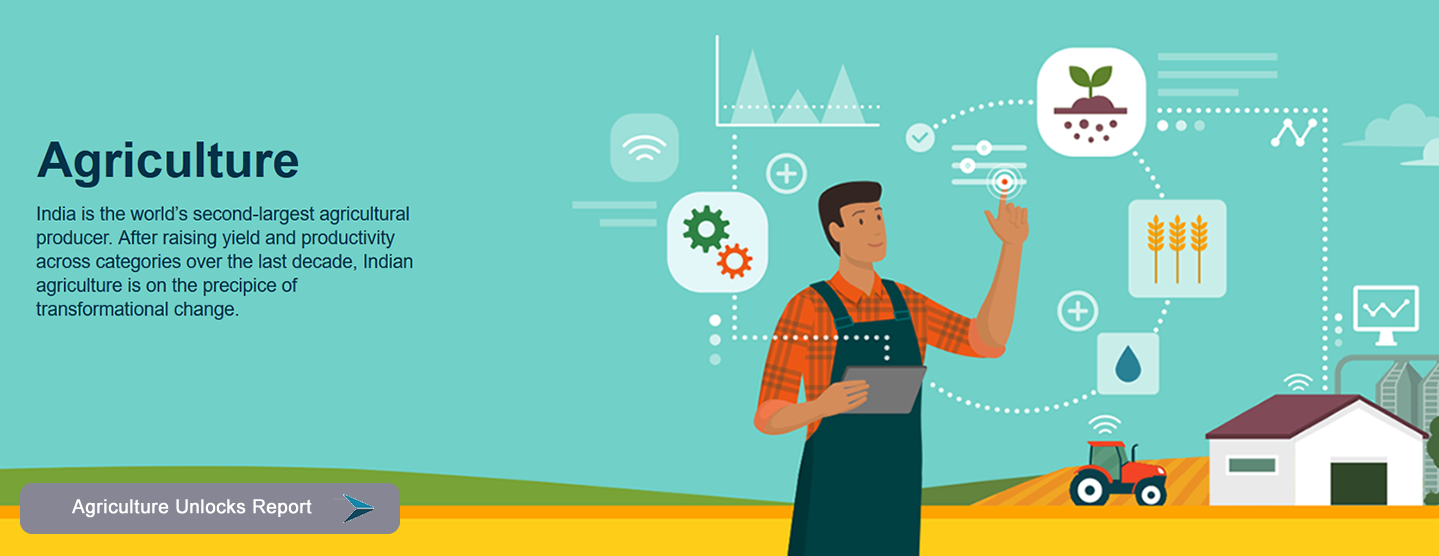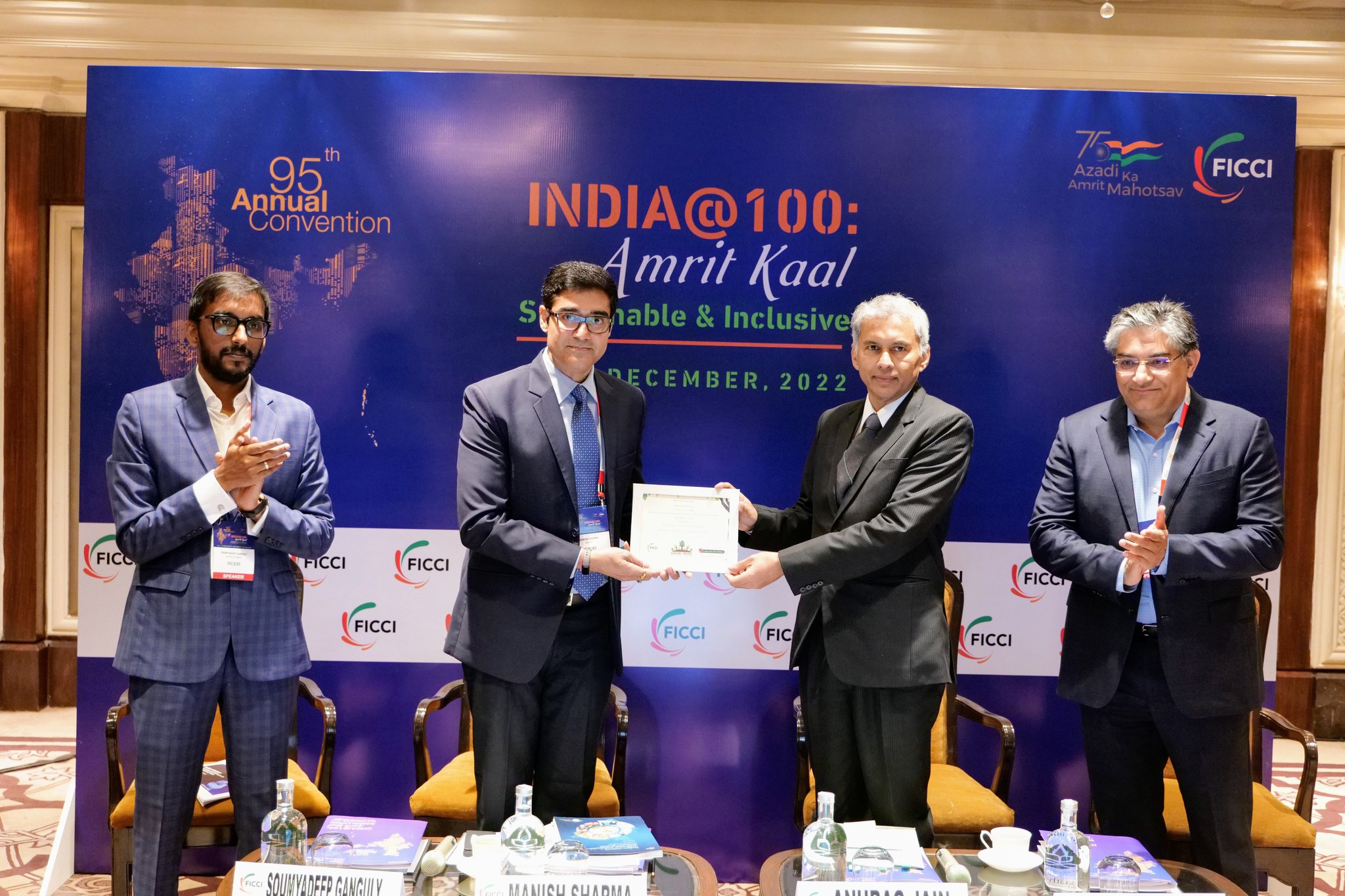
- Multi-stakeholder initiative outlines over 50 actions in 10 priority sectors by 2030 tolay a pathway to: increase India’s per capita income sixfold to Rs 10 lakh, achieve 600 million jobs, double female participation in labour force, cut carbon emissions, and provide access to clean water for all, by 2047
- Building India’s innovation muscle: New Innovation Clusters, hotspots for incubation of new technologies proposed. Innovation Quotient, a benchmarking tool to assess a company’s readiness, strengths, and execution capabilities for innovation launched
AMN / NEW DELHI, 16 December 2022
With India’s century of independence 25 years away, the Federation of Indian Chambers of Commerce and Industry (FICCI), in partnership with McKinsey & Company, has launched ‘India’s Century – Achieving sustainable, inclusive growth,’ a multi-stakeholder initiative aimed at catalyzing actions to achieve the country’s full economic potential.
A launch paper for the initiative, released today, outlines a roadmap for what India can do to unlock opportunities to achieve sustainable and inclusive growth along key metrics by 2047 – potentially increasing per capita income sixfold to Rs 10 lakh, achieving 600 million jobs, doubling female participation in the labour force to 45-50%, cutting carbon emissions, and providing access to clean water for all.
With input from over 200 companies, the paper identifies 10 priority sectors for growth over the next 25 years, with a set of over 50 actions for companies and industry bodies, supported by the state and central governments, to unlock that growth.
Mr Sanjiv Mehta, President, FICCI said, “India is at an inflection point in its journey of becoming the third largest and an upper-middle income economy. The India’s Century initiative sets out an actionable roadmap for all stakeholders to unleash India’s potential in becoming an economic superpower much before India turns 100. The industry will have to lead the way and build innovative solutions with a lens of People and Planet approach, while the government plays the role of an enabler to nurture the growth and ensure global competitiveness.”
Mr Alok Kshirsagar, Senior Partner, McKinsey & Company said, “Companies in India can now create millions of jobs and value through innovations that capture the full potential of digital transformation, energy transition, modern infrastructure development, and realignment of global supply chains. The India’s Century initiative provides a practical roadmap for 10 industry sectors and the capabilities required to deliver sustainable and inclusive growth for our country.”

Actions in 10 priority sectors by 2030 that could account for bulk of job creation, productivity
India Inc. can drive the following actions before the end of the decade to put us on the path to realize the India’s Century aspirations:
- Agriculture: Double the levels of exports and food processing through scaling up the infrastructure (e.g., low capex pre-processing centers, cold chain), enhanced R&D/innovation (e.g., climate-resistant germplasm, precision farming) and establishing digital export platforms.
- Manufacturing: Triple high value exports and drive down import manufacturing by developing port proximate clusters for high growth sectors (such as electronics, chemicals, medical devices), scaling digital/software-enabled manufacturing and positioning India as a green manufacturing capital with industry aligned standards and practices (e.g., use of green alternatives such as bio-based feedstock).
- Consumer tech: Enable a 5x growth in e-retail transactors (to 770Mn) and double share of digital and organized market in consumer spend (to 54%) by developing digital platforms and ecosystem businesses using the ‘Digital India stack’, building datasets of national importance (e.g., health data, grain value chain, land records, weather) and supporting the development of industry standards around emerging technologies (such as blockchain).
- Information and Communication Technology: Increase India’s share of global SaaS revenue by 6x, strengthen its position as the global factory for digital & cloud by driving an industry-wide skilling and certification mandate, attract R&D investments of leading product companies and strengthen global go-to-market capabilities of early-stage companies.
- Financial services: Double the credit penetration of MSMEs to 80 percent and reduce cost of commercial borrowing by launching use cases of the Account Aggregator framework (e.g., quick loan applications, tax filing for MSMEs), promote co-lending, create digital securities for physical collaterals and customize NPA standards for MSMEs based on sector specific cash-flow cycles.
- Healthcare: Double the number of doctors, nurses, and allied healthcare professionals per capita, leverage digital healthcare solutions (e.g., telehealth, Ayushman Bharat Digital Mission), increase intake of MBBS graduates, and reduce insurance premium costs by building actuarial databases on top of PM-JAY data.
- Infrastructure and logistics: Reduce logistics costs (from 14 to 8 percent of GDP) and infrastructure project cost overruns (to less than 5 percent) by scaling adoption of digital tools (e.g., digital twins), encouraging training and accreditation of workers (e.g., using e-Shram portal), developing analytics use cases on logistics ecosystem data and formulating industry-wide standards (e.g., on cargo) to boost delivery efficiency.
- Energy: Double the share of renewables in power generation and become the world’s cheapest producer of green hydrogen by setting up a central RE infrastructure planning and monitoring agency to debottleneck land planning, driving market reforms to unlock demand (e.g. rationalize tariff structure) and scale storage systems to ensure round-the-clock supply.
- Water: Grow the penetration of households with tap water connections and of wastewater treatment to 100 percent, by promoting water-efficient agricultural practices (e.g., water-efficient germplasm), and boost adoption of advanced Zero-Liquid Discharge & water re-use technologies in water-intensive industries.
- Education: Improve higher-education gross enrolment ratio to 60 percent and the student- teacher ratio (to 1:15 in primary schools and to 1:20 in higher grades) by developing a student-centric education model, enhancing digital and physical infrastructure (e.g., AR, gamification) and strengthening faculty training to deliver high-end teaching quality.
India Inc. could spearhead the strengthening of four important capabilities that will determine growth momentum across sectors and themes over the next 12 to 18 months.
- Building India’s innovation muscle: India’s improved position in WIPO Global Innovation Index rankings indicates progress in building a conducive environment for innovation. Building on this, there are two initiatives underway to strengthen the innovation agenda: (a) setting up nine Innovation Clusters across critical themes such as clean energy, smart mobility, new materials and more, (b) scaling up the Innovation Quotient as a means to measure innovation capabilities and highlight practices needed to strengthen innovation outcomes. The first Innovation Cluster on clean energy was launched at the launch Summit with participation from broad stakeholders cutting across large enterprises, start-ups, venture capital firms and academic/research institutions.
- Scaling up India’s SMEs to grow 1,000 mid-sized and 10,000 small firms into global challengers – India has a ‘missing middle’ – a dearth of midsized firms that typically grow into formidable competitors for large companies. India’s peer emerging economies, have almost double India’s number of midsize and large firms per trillion dollars of GDP. This gap can be addressed with easier access to low-cost capital with digital lending solutions that leverage the Account Aggregator and Open Credit Enablement Network frameworks, simpler one-stop processes to start and run their businesses, and support for resources they cannot always afford to hire, such as in-house lawyers.
- Strengthening the skills of its future workforce to match the needs of high-growth sectors. This will entail bolstering foundational training in schools and universities on emerging technology domains, large scale re-skilling initiatives in enterprises and modernizing teaching methods with a greater focus on practical apprenticeship and gamification.
- Shaping India into the preferred destination for foreign investment – Companies in India depend heavily on bank lending, getting 68 percent of their money from banks (vs 31 percent for companies in the US, for example). India can become a magnet for global capital by deepening capital markets with a broader set of products (e.g., ESG securities) and services (e.g., digital platforms to connect companies with institutional investors), and consider entry into the Global Bond Index.
Upcoming Union Budget will prepare India for next 25 years: FM Sitharaman







